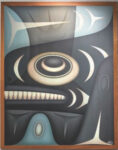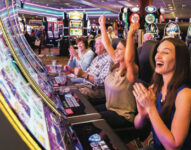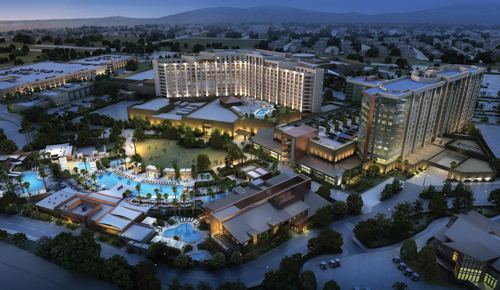
Most people are familiar with the powerhouse tribal casino resorts, or the “integrated resorts,” as they are known in today’s parlance. Foxwoods, Mohegan Sun, Mystic Lake, Morongo, Tulalip and several other massive tribal casinos are well-known and remarkable. Their size alone makes them stand apart, but when you layer on the gourmet restaurants, retail, entertainment venues, convention and meeting space and more, these are truly the standouts of the industry.
But tribal gaming is much more than simply large, integrated resorts. In fact, in 2015 (the last full year for which gross gaming revenues have been compiled), 55 percent of the almost $30 billion in revenue came from properties that posted under $250 million annually. So while the big properties certainly get the lion’s share of the revenue, the smaller ones are not struggling.
The editorial advisory board for Tribal Government Gaming has identified five properties that have made a name for themselves as some of the top properties in Indian Country. They may not be the biggest properties but they have produced a solid return on investment for their tribal owners and prepared the tribe for future competition by adding the non-gaming amenities that will make them destinations far into the future.
1. Start Small, Think Big
Pechanga Resort and Casino once was small enough that special-event participants stayed at a nearby hotel and gaming was conducted in a series of interconnected trailers.
Now, via the Pechanga Band of Luiseño Indians, it is a monolith. A 500-plus-room hotel and nearly 200,000 square feet of gaming space was already impressive enough for the property strategically situated between prominent population centers of San Diego and Los Angeles.
Soon, there will be more. Retail and amenities command center stage of a substantial $285 million property-wide expansion set to finish early in 2018. It will be larger than the value of the original facility, which opened in 2002 for $262 million.
When construction ends, Pechanga will have 200,000 square feet of gaming space, nearly 275,000 square feet of indoor and outdoor event-meeting and convention space, 1,090 hotel rooms, 13 restaurants, several pools and more than 4,500 employees.
The expansion adds a new, AAA Four Diamond, 568-room and suite hotel wing, a stand-alone luxury two-story spa and salon with 17 treatment rooms, a fitness center and hydrotherapy pool terrace, a resort-style pool complex with eight pool areas, two new restaurants and an additional 67,000 square feet of event space.
This is a transformation. Patrons can plan longer trips. Companies can book more conventions. The expansion is an eye-opening commitment to non-gaming customers and an added inducement for players.
“We are committed to making Pechanga Resort & Casino a world-class resort destination,” says Patrick Murphy of the Pechanga Development Corporation. “We have consistently provided our guests with excellent quality and customer service, and now we’re making their experience even better.
“We’ve brought in some of the best designers, architects and builders who have worked with other iconic properties to create stunning resort features. We are very excited for the future.”
Pechanga is not only the largest casino in California, but one of the region’s largest employers, at 4,100 jobs. The expansion will have an economic output of more than $550 million and nearly 3,000 new jobs, according to Dr. Christopher Thornberg, founding partner of Beacon Economics. He estimates that the local economy will benefit by an additional 560 jobs going forward.
The design team is led by San Diego-based Delawie Architects, the original designers of the Pechanga Resort and Casino. Newport Beach, California-based Lifescapes International was selected as the pool area and landscape architects. Over the past five decades, the firm has designed iconic landscapes at world-class resorts including the Bellagio, Wynn and Venetian hotels.
This is Lifescapes’ first project with Pechanga. Company officials say they are honored to be picked for the hotel expansion and design, with the primary focus on creating an outdoor activity area and a resort-style pool complex, porte cochere and roof-deck.
Highlights include an event lawn for concerts and boxing matches, new spa and spa gardens, VIP cabanas and a resort-style pool complex. The company also will be involved in extended parking and entry roads.
Like many tribal gaming operators, Pechanga started small. Unlike many, it became a major power.
2. Winning the Race
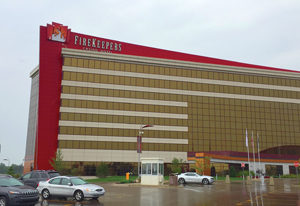 Gentlemen, start your financial engines.
Gentlemen, start your financial engines.
FireKeepers literally broke from the pack with a high-octane investment last year. The Battle Creek, Michigan property sponsored the June, 2016 NASCAR sprint race, now called the FireKeepers Casino 400, at Michigan International Speeday.
“Naming rights to a NASCAR race is the culmination of over seven years of growth and success at FireKeepers,” says Jamie Stuck, Tribal Council chairman of the Nottawaseppi Huron Band of the Potawatomi. “We are a premier operator and this history making event generates the awareness our property deserves.”
“From television, radio and print to enormous social media, the millions of impressions leading up to, during, and following the race gave us great energy and credibility, as we seek to tell our story in a highly competitive part of the country from a gaming standpoint.”
It is one worth recounting.
The FireKeepers property is owned and operated by the Nottawaseppi Huron Band of Potawatomi. It opened in 2009 and made a major 2012 expansion on an eight-story 243-room hotel.
Tribal culture, expressed via the Seven Grandfather Teachings of the Potawatomi, is represented in seven pillars of the hotel lobby: love, bravery, humility, honesty, respect, wisdom and truth.
FireKeepers will retain its high profile with at least two more years, probably more, of NASCAR sponsorship. The casino serves its public with a motivated work force of 1,725, culled from a pool of roughly 35,000 applicants.
“The tribal council and the senior management team are focused on delivering for our guests and our team members,” Stuck says. “Rewarding and appreciating team members, from rallies to bonuses to any event that brings a smile to their faces is more than just a plan, it’s our top priority. We readily display the many awards we receive, because the team members are the ones who create the lasting positive relationships with our guests.”
FireKeepers draws customers from Michigan, Indiana, Ohio and Illinois, among other regions. Stuck takes pride in recalling a 2016 readership poll in Indiana.
“The Fort Wayne daily newspaper conducts a poll and FireKeepers is voted the top casino in northwest Indiana,” he states. “That says a lot about the quality of our service since we aren’t in Indiana. We had a little fun with that at first but sincerely ran a thank you ad to all our friends in the state.”
Keeping its foot on the philanthropic pedal, FireKeepers recently purchased an historic fire station in Battle Creek. It will be made into a unique restaurant.
“This is one of the most unique community initiatives in the history of gaming, as we are saving a historic downtown firehouse, creating a great bakery and restaurant in that have adjoining space for a dignified Food Bank to support those less fortunate. Eighty percent of sales will be given to local charities plus we are going to grow fresh vegetables on nearby tribal land with a goal of a free salad bar for local public schools.”
But they have a worldwide presence.
3. Grow We Must
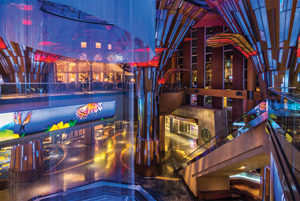 Harrah’s Cherokee has unfurled the major “E” word in the gaming industry. Expansion.
Harrah’s Cherokee has unfurled the major “E” word in the gaming industry. Expansion.
The North Carolina powerhouse recently announced plans for 600 rooms, another parking deck and about 100,000 square feet of convention space. It is a sign of health and robust ambition for a property that has grown steadily, and smartly, over the past 20 years for the Eastern Band of Cherokee Indians.
From the days of video poker in 1997, Harrah’s gradually moved into bingo, about 150,000 square feet of gaming space, more than 1,100 hotel rooms, more than 100 suites and several notable restaurants. The property includes a 15,000-square-foot conference center, a 3,000-seat events center, a pool, the Essence Lounge, a workout room, a lobby cafe and a food court with four restaurants including a Ruth’s Chris Steak House.
Harrah’s Cherokee built as it went, unfurling a roughly $650 million expansion, for example, after the property proved it had a market.
The company blueprint included a shrewd decision to build outwardly. Harrah’s opened a smaller property far enough from its own interests but close enough to draw business from prominent population centers in 2015. The result was Valley River Casino on an 85-acre track in western North Carolina.
From a design standpoint, Minnesota-based Cuningham Group has been involved from the outset. The company prominently contributed to the $650 million expansion project and the Valley River rollout. It will bid on the new business, too. Cuningham has been a major player in tribal gaming since the late 1980s.
“We see a trend, especially in longstanding markets, that the operators must reinvent themselves because they are no longer the only casino in town,” says Sam Olbekson, director of Native American planning and design for Cuningham Group.
Olbekson says the tribal properties can walk the cultural-commercial tightrope.
“They have been able to express their culture in a way that is honorable to them without being too overt,” he says. “There are subtle things that community members would realize that visitors would not. You see a rich palate of natural materials. The colors have a warm, welcoming sense.
“A major piece of that multimillion-dollar expansion project at Harrah’s Cherokee was that great rotunda.”
The centerpiece of the rotunda is twin 68-foot waterfalls that cascade from the ceiling to a collection pool in the floor. Wrapping behind the waterfalls, a massive, floating, spiral staircase leads up to the second floor.
Cuningham helped the tribe express its property-wide message that “every building tells a story.”
Every expansion does, too. The recent Harrah’s news indicates that although business thrives, the company won’t be complacent.
4. Grand Canyon Junction
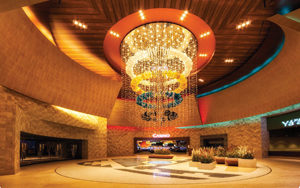 Grand is an appropriate term for Twin Arrows Navajo Casino. As in Grand Canyon.
Grand is an appropriate term for Twin Arrows Navajo Casino. As in Grand Canyon.
The property just east of Flagstaff, Arizona, which opened in 2013, draws upon a spectacular wild card. The Grand Canyon, one of the world’s most heralded landmarks, can be reached in roughly an hour and a half. Many patrons blend a gambling-sightseeing trip, helping Twin Arrows target non-gaming customers. The property obtains a ripple effect from hotels closest to the Grand Canyon often being booked. Patrons willing to stay further away discover gambling and quality accommodations, while Twin Arrows receives foot traffic and future players.
This establishment follows the blueprint of a classic destination resort. Rather than feel compelled to keep customers on property, it can embed gaming into a vacation concept. The dynamic inspires multi-day occupancy, which in turn propels gambling revenue.
Although the 45,000-square-foot casino and 120 guest rooms indicate its commitment to gambling, Twin Arrows targets both gamers and retail customers with amenities. They include entertainment venues, restaurants, an event center, a pool and a retail shop.
The property has some lavish resort earmarks, including luxury guest rooms (available in three configurations), gourmet dining, culturally infused casual dining, a fitness center, a heated indoor pool and more than 11,000 square feet of meeting space.
Las Vegas-based Friedmutter Group played a major role in the master plan, architecture, interior design and construction administration. Its attention to detail was meticulous, paying tribute to several cultural facets, including the Four Worlds of the Navajo, the Navajo creation story.
The main drive and porte cochere are expressed architecturally as a vertically sweeping, spiraling gesture representing the upward movement of ancestors through the four worlds. A water feature at the entrance denotes the rising waters motivating people to move up and seek new worlds.
Guests enter through a black textured stone vestibule, a contemporary abstraction of the first world, which was filled with mist and sound and inhabited by the Insect People. The vestibule leads the guest to the main rotunda. This monumental volume of space features several embodied concepts relating to the emergence of the different worlds.
Stone walls surround the space supporting four sweeping soffits. Each soffit face depicts a different world and the people who came before. The second world was the realm of Bluebirds and Swallow People, the third was that of the Grasshoppers and the fourth is where man and woman came to be.
The hotel tower features a dimensional over-scaled weave pattern, suggesting the work of hands and hearts—the weaving of baskets, textiles and song. At the center of the casino, a feature area is surrounded by a beautiful custom silver and bronze drapery, enclosing the area in an oval portal. This luminous metal chain drapery features an organic pattern of growing grasses and reeds. The sparkling crystal lanterns surround the outer layers, and inside a reflective chandelier with independent rays of light forms a central ceiling feature.
5. Right Place, Right Time
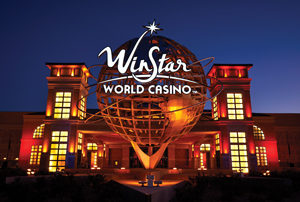 WinStar World Casino and Resort is perfectly positioned. One of the world’s largest properties stands in Thackerville, Oklahoma, about 90 minutes north of the heavily populated Dallas-Fort Worth, Texas metro area and about two hours south of Oklahoma City. The Chickasaw Nation of Oklahoma facility also draws customers from surrounding states.
WinStar World Casino and Resort is perfectly positioned. One of the world’s largest properties stands in Thackerville, Oklahoma, about 90 minutes north of the heavily populated Dallas-Fort Worth, Texas metro area and about two hours south of Oklahoma City. The Chickasaw Nation of Oklahoma facility also draws customers from surrounding states.
The casino features more than 600,000 square feet of gaming with more than 7,400 electronic gaming machines set in one of eight international city-themed gaming plazas. WinStar also offers 99 table games and 46 poker tables, bingo, keno and off-track betting.
It has three overnight accommodations. The WinStar World Casino Hotel has 1,400 rooms with direct access to the casino floor and several outdoor pools and cabanas. The Inn at WinStar is a short shuttle ride from the casino and has 100 pet-friendly rooms. Longer stays are available at the WinStar RV Park, which includes over 150 RV slips, a separate pool and a clubhouse.
The property opened in 2004 and has experienced several prominent expansions.
“We combine the complete casino resort-style experience with world-class customer service,” says Wayne McCormick, WinStar’s general manager. “By providing this customer-focused approach along with our extensive gaming options, a round of golf (the property will soon have 36 holes), a chance to see the nation’s top artists perform live and relax in a luxurious hotel room all in one trip, we continue to be a world-class destination.”
In 2016, the 66,950-square-foot WinStar Convention Center opened. Its usage includes hosting conventions, conferences, luncheons, weddings, meetings and receptions. The newest resort expansion showcases a grand ballroom, junior ballroom, executive boardrooms, pre-function space and on-site catering.
“We also host a series of events that attract non-gaming patrons,” McCormick indicates. “Two notable events for 2017 are the return of the PBR: Built Ford Tough Series September 2-3 and the World Long Drive Championships (televised by the Golf Channel, September 5 and 6) for the third consecutive year.”
Memphis, Tennessee-based HBG Design (formerly Hnedak Bobo Group) has long been part of the WinStar emergence.
“We’d like to think HBG Design has played an integral role molding, shaping and evolving the WinStar World entertainment experience,” principal Dike Bacon says. “The dramatic elevation of the resort quality has been a significant contributor to the Chickasaw’s success. The challenge penetrating a sophisticated market like DFW is to offer high quality and complimentary products and activities that collectively are difficult to replicate individually.”
Gaming is the primary economic engine, but a multi-faceted, integrated resort experience is the differentiator, Bacon indicates.
“Our most recent projects have included major 1,000-key hotel expansions and significant expansions to the casino and support amenities,” he says. “We also completely redesigned the resort arrival experience including new building facades, porte cochere, public entry spaces and front desk. We redesigned a large 500-seat buffet around an Antoni Gaudi theme and have designed new bars and restaurants on the property. One of the most fun components of the recent expansion was the creation of a very exclusive VIP lounge and a VIP gaming area.”




